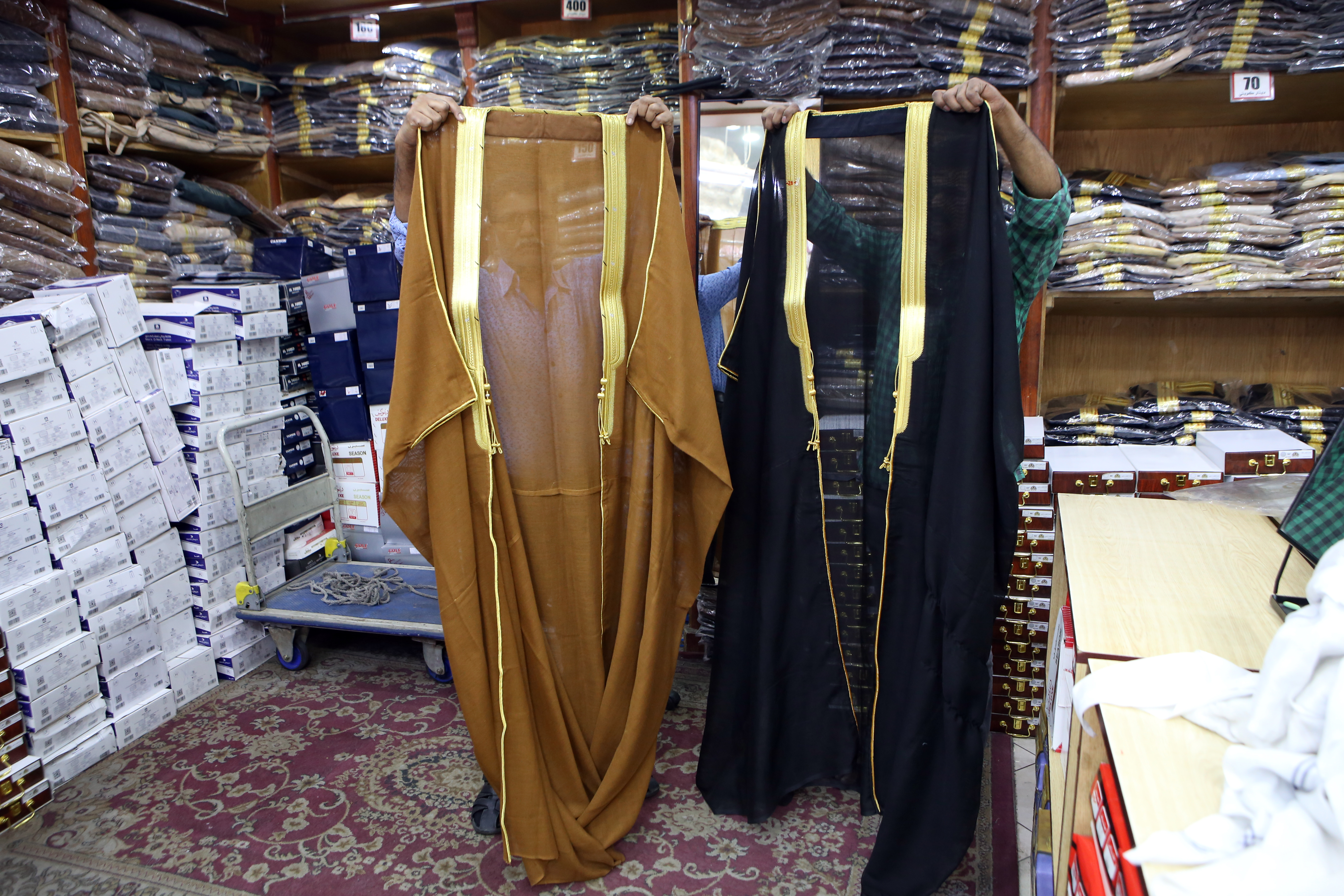By Faten Omar
KUWAIT: Making bishts - a traditional men’s cloak popular in the Gulf region - is considered one of the most important traditional handicrafts and the oldest. The traditional bisht is in high demand by many Kuwaitis, who wear them at weddings and on several occasions, where it exudes a very royal and luxury look. Saeed Al-Tamimi told Kuwait Times about his journey in the world of bishts since 1962.
Tamimi, who owns several shops in Souk Mubarakiya in Kuwait City, began his journey when he was 10 years old, when his first family-owned shop was located in the old bishoot market. “I have been working in this field since I was 10 years old. The shop was in the middle of the old bishoot market. We lived our lives there, and witnessed the market’s development through the years,” he added. Tamimi’s shop is always crowded with women, as his shop is not limited to making bishts, but also abayas - a loose-fitting robe worn by women. His shop’s reputation has extended for generations. People know him as an expert who specializes in taking measurement with his bare eyes, with extensive experience in knowing the quality and details of raw materials.
“We started as a partnership with Al-Baghli in the bishoot market. My father took me along to learn the craft in my childhood. We have roots in this trade and we have been working in the bisht field for a long time,” he said. “In the seventies, we went as a group of specialists in the abaya and bisht trade in a Kuwaiti delegation to China. There was synergy in the market in the past and we were not competing,” he added.
Tamimi revealed  the industry has developed — where in the past there were five to six colors of bishts, now it has reached more than 58 colors in fabrics imported from Japan and Britain. “The development began from the seventies, when trendier colors were in demand in the Kuwaiti market.” Regarding the bisht boom, Tamimi said: “We now have more customers because there are more occasions and weddings, and for gifting. Because of the variety of products, sales are better than before.”
the industry has developed — where in the past there were five to six colors of bishts, now it has reached more than 58 colors in fabrics imported from Japan and Britain. “The development began from the seventies, when trendier colors were in demand in the Kuwaiti market.” Regarding the bisht boom, Tamimi said: “We now have more customers because there are more occasions and weddings, and for gifting. Because of the variety of products, sales are better than before.”
Tamimi said his shop sews bishts and abayas in Syria. “There are expert women in Syria for making bishts. We import the fabric from Japan and send it to Syria for sewing to contribute to helping needy Syrian women and to have better quality.” Tamimi said traders remain updated on the latest trendy colors and shapes in this field, adding Japanese specialists visit them every three months to keep them abreast of developments in the field of bishts and abayas. “The Japanese experts are open-minded and welcome our new ideas, and there is 100 percent guarantee that their craftsmanship is of the highest quality.”
The wool used for bishts is sheared from New Zealand sheep, Tamimi said, explaining there are differences in thicknesses of the weave, depending on the seasons. There are three types of stitches used in customizing. The zari thread is made of gold or silver, or gold-plated or silver-plated threads imported from France, Germany and Japan. The bisht was formerly worn in diwaniyas, but nowadays it is limited to weddings and formal occasions.












